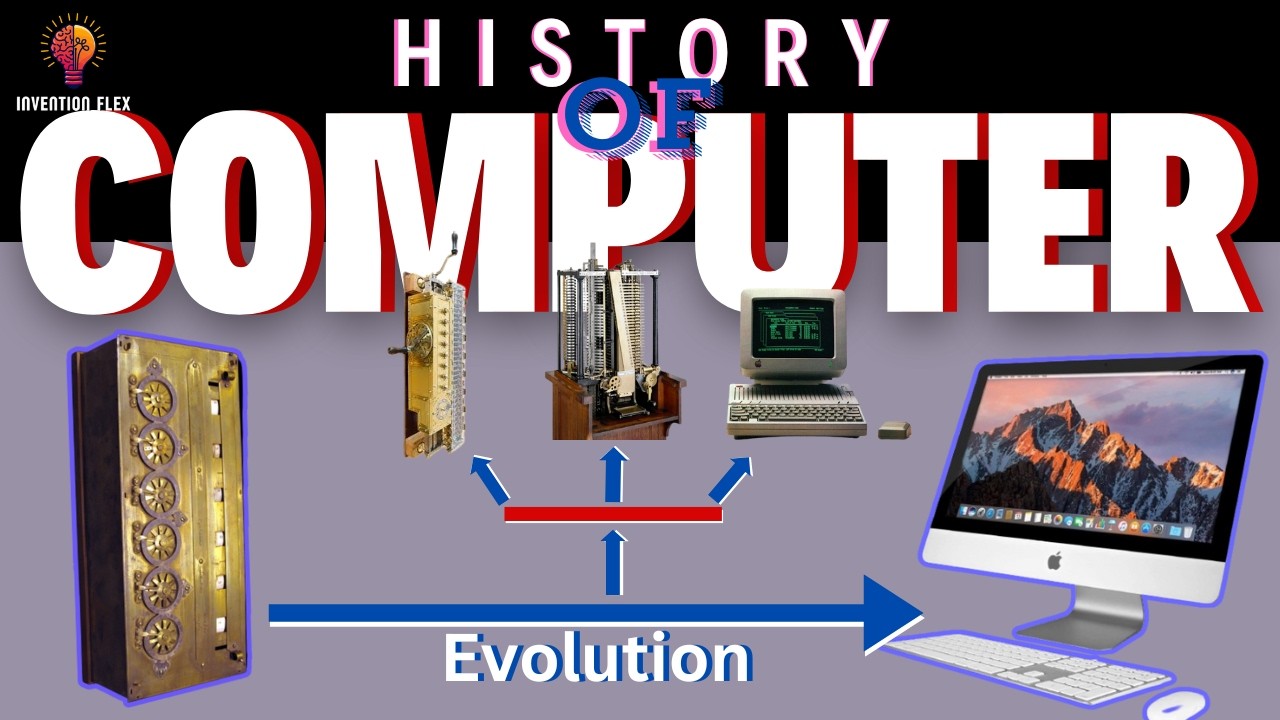Evolution of Microprocessors
Summary
TLDREmbark on a historical journey through the evolution of microprocessors, from the bulky vacuum tubes to the sophisticated 64-bit chips that power our modern world. Explore the technological milestones that revolutionized computing, including the invention of the transistor, the advent of microfabrication, and the rise of RISC architecture. Discover how these innovations have transformed our lives, paving the way for personal computing, mobile devices, and the potential of quantum computing to shape the future.
Takeaways
- 📚 The evolution of microprocessors began with vacuum tubes in the early 1900s, which were bulky and power-hungry.
- 🔬 The transistor, invented in 1947, was a significant breakthrough, leading to smaller, more reliable, and energy-efficient devices.
- 💡 Microfabrication techniques like photolithography have been crucial in the development of increasingly powerful microprocessors.
- 🧠 The first microprocessors were 4-bit, used primarily in calculators and simple devices, with the Intel 4004 being a pioneer.
- 💻 The second generation of 8-bit microprocessors was instrumental in the rise of personal computers, with the Intel 8080 being a standout.
- 🎮 16-bit microprocessors in the third generation enabled more advanced personal computers and gaming consoles, with the Intel 80286 being a key player.
- 🌐 The fourth generation introduced 32-bit microprocessors, with RISC architecture and the Intel Pentium leading the way in high-end computing.
- 🚀 The fifth generation brought 64-bit microprocessors, with parallel processing and AI integration, exemplified by the Intel Pentium Pro and AMD K5.
- 🌐 The Pentium processor in 1995 marked a significant leap with 64-bit computing, high clock speeds, and millions of transistors.
- 🔮 Future developments in microprocessors may include quantum computing and neuromorphic computing, promising even greater advancements.
Q & A
What were the limitations of vacuum tubes in early electronic devices?
-Vacuum tubes were bulky, fragile, and consumed a lot of power, which led to the search for more efficient technology.
Who invented the transistor and when was it invented?
-The transistor was invented in 1947 by John Bardeen, Walter Brattain, and William Shockley at Bell Labs.
What was the significance of the Intel 4004 microprocessor?
-The Intel 4004, released in 1971, was the first commercially successful microprocessor and marked the beginning of microprocessor evolution.
What were the key features of the second generation 8-bit microprocessors?
-Second generation 8-bit microprocessors, like the Intel 8080, had larger memory, a higher clock speed of 2 MHz, and could perform more complex instructions.
What is microfabrication and how does it relate to microprocessors?
-Microfabrication involves techniques like photolithography to create tiny structures on a microscopic scale, which is essential for the development of powerful microprocessors.
What was the main innovation of the third generation 16-bit microprocessors?
-The third generation 16-bit microprocessors, such as the Intel 80286, introduced larger memory and the capability for multitasking.
What does RISC stand for and how did it impact fourth generation microprocessors?
-RISC stands for Reduced Instruction Set Computing, and its introduction in the fourth generation allowed for faster and more efficient processing of instructions.
Which microprocessor was a key innovation in the fifth generation of 64-bit microprocessors?
-The Pentium processor, introduced in 1995, was a key innovation in the fifth generation, featuring higher clock speeds and more transistors for increased power.
How have microprocessors transformed from their first to fifth generation?
-Microprocessors evolved from 4-bit in the first generation to 64-bit in the fifth, increasing in power, efficiency, and capabilities, and enabling new technologies and applications.
What is quantum computing and how does it differ from classical microprocessors?
-Quantum computing uses quantum bits or qubits, which can exist in multiple states simultaneously, allowing it to solve complex problems much faster than classical microprocessors that use bits.
What are some potential future developments for microprocessors mentioned in the script?
-Potential future developments include advances in neuromorphic computing, mimicking the human brain, and the development of more powerful quantum processors.
Outlines

Dieser Bereich ist nur für Premium-Benutzer verfügbar. Bitte führen Sie ein Upgrade durch, um auf diesen Abschnitt zuzugreifen.
Upgrade durchführenMindmap

Dieser Bereich ist nur für Premium-Benutzer verfügbar. Bitte führen Sie ein Upgrade durch, um auf diesen Abschnitt zuzugreifen.
Upgrade durchführenKeywords

Dieser Bereich ist nur für Premium-Benutzer verfügbar. Bitte führen Sie ein Upgrade durch, um auf diesen Abschnitt zuzugreifen.
Upgrade durchführenHighlights

Dieser Bereich ist nur für Premium-Benutzer verfügbar. Bitte führen Sie ein Upgrade durch, um auf diesen Abschnitt zuzugreifen.
Upgrade durchführenTranscripts

Dieser Bereich ist nur für Premium-Benutzer verfügbar. Bitte führen Sie ein Upgrade durch, um auf diesen Abschnitt zuzugreifen.
Upgrade durchführenWeitere ähnliche Videos ansehen

The Story of Math: How Ancient Discoveries Shaped Modern Mathematics

History Of Computer | Full History And Evolution Of Computers Till Date

The End of Moore’s Law?! (Shrinking The Transistor To 1nm)

Transistors - The Invention That Changed The World

CPUs and CPU Sockets

Computer Concepts - Module 1: Impact of Technology Part 1 (4K)
5.0 / 5 (0 votes)
